Château Beychevelle
Château Léoville Poyferré
Saint Julien Red Bordeaux Blend 2016
Drank 1/18/19 at the Union des Grands Crus de Bordeaux event in Miami. All wines from the 2016 Vintage.
Tasting pour, no formal notes taken. Most of these wines are very tight, and will require 5-15 years to really come together. Many will likely improve a few points with time.
This was tied with the Beychevelle for my favorite St Julien of the night. Complex dark fruit with big tannins, showing better than the Leoville Barton at this stage. — 6 years ago

Château Branaire (Duluc-Ducru)
St. Julien Red Bordeaux Blend 2006
On the nose, bright, ripe, ruby; blackberries, dark cherries, black raspberries, blue fruit mix, strawberries, creamy raspberries, plums, cranberries, black tea, loamy soils, dry clay, dry stones, limestone minerals, saddlewood, crush dry rocks, dark moist soils, dark chocolate, vanilla, field of violets, lavender and fresh red florals.
The palate is medium-full yet a little lean. The fruits are elegant, ruby, ripe; blackberries, dark cherries, black raspberries, blue fruit mix, strawberries, creamy raspberries, plums, cranberries, black tea, loamy soils, dry clay, dry stones, limestone minerals, used leather, cedar, crush dry rocks, dark moist soils, dark chocolate, vanilla, field of violets, lavender and fresh red florals. The acidity is very good. The length, balance and length are nice. The structure a little lean. It a well polished rich fruit finish, but is a little short.
Photos of; the Chateau, Owner Patrick Maroteaux (may he RIP), Estate grapes and their barrel room.
Producer notes & history...Branaire Ducru has a long history has a long history that dates back to 1680. In those days, Branaire Ducru was a part of a larger Beychevelle. When the owner of Beychevelle passed away, he left behind a huge Bordeaux vineyard that was seriously in debt. To pay off the debt, the vineyard was broken up and sold. Several new estates were created in Saint Julien, which include Chateau Branaire Ducru. Jean-Baptiste Braneyre created the estate in 1680. As was was tradition in Bordeaux, the owner gave the estate his name, which is where the first part of the properties name came was given. Braneyre was later altered to Branaire. Braneyre bought the land we know as Branaire Ducru because of the terroir. He understood that Cabernet Sauvignon grew best on the deep gravel soils found in the Medoc. With that, we have the birth of Branaire Ducru. Or, at least the Branaire part. The middle name was gained through marriage. Marie Braneyre married Pierre de Luc which as you can guess, gave us the Branaire Duluc (the name of their 2nd wine). Almost 100 years later, the first winery at the property was constructed in 1824. It took almost 200 years for the Ducru portion of the wines name to make its way to the label. In 1875, with no direct descendants, Gustave Ducru, a more distant relative took over the property and added his name to the label making it, Chateau Branaire Ducru.
Patrick Maroteaux bought Branaire Ducru in 1988 from the Tapie family who had owned It since 1919. Prior to his ownership of Branaire Ducru, Patrick Maroteaux had no prior experience in the wine business. His background was in banking and then a president of the massive sugar company, Eurosucre. Patrick Maroteaux also served as the President of the UGCB, Union of Grand Crus Bordeaux, and as the President of the Saint Julien appellation.
Since his purchase, Patrick Maroteaux has focused much of his efforts on performing extensive work in the vineyards and in the cellars. He also began reducing the yields. Additionally, he increased the size of their vineyards by 10 hectares. Patrick was also modernized their winemaking techniques.
In fact, Patrick Maroteaux was one of the first producers in the Left Bank to being filling his tanks entirely by gravity. He did this beginning with the 91 vintage. This was done with the help of Philippe Dhalluin.
Philippe Dhalluin left Branaire Ducru in 2004 and took the same position as the director for wine making at Chateau Mouton Rothschild. Philippe Dhalluin was replaced by Jean Dominique Videau.
Chateau Branaire Ducru is a family business. The son of Patrick Maroteaux, François Xavier Maroteaux has carried the family business and joined the estate. Sadly, on November 19, 2017, Patrick Maroteaux passed away at the age of 67. His son, François Xavier Maroteaux took over the full time responsibilities of managing the property.
All the new technical improvements at Branaire Ducru quickly paid off for Patrick Maroteaux. Beginning with the 2000 vintage, Branaire Ducru became one of the top Saint Julien wines. It’s also one of the better values for high quality Bordeaux.
The 60 hectare vineyard of Branaire Ducru is planted to 65% Cabernet-Sauvignon, 28% Merlot, 4% Cabernet Franc and 3% Petit Verdot. The vineyard is very close to the size it was during the time of the 1855 Classification.
The terroir is deep gravel with clay soils. The best terroir is located near the chateau, closest to the Gironde river. They also have blocks further inland, with a small section of vines placed close to Chateau Lagrange and Chateau Talbot. The vineyard can be divided into 15 different blocks with 70 different parcels of vines. On average, the vines are close to 35 years of age. However, the estate has older vines as well. The oldest vines date back close to 90 years of age. The vineyard is planted to a vine density that ranges from 6,700 to 10,000 vines per hectare. The higher levels of vine density are for the newer plantings. The goal of the property is to continue increasing the vine density in all of their better terroirs.
Branaire Ducru, fermentation takes place in 28 temperature controlled, stainless steel tanks. The 28 vats vary in size. The vats range in size from as small as 30 hectoliters and up to 210 hectoliters. Each vat is sized for the needs of each specific vineyard parcel. Each vat is filled using the gravity based system.
Branaire Ducru is aged in 60 to 65% new, French oak barrels for between 16-20 months. The amount of new oak varies depending on the quality, character and style of each vintage. On average, the annual production is about 25,000 cases depending on the vintage. — 6 years ago

Château Beaumont
Cru Bourgeois Haut-Médoc Red Bordeaux Blend 2015
2015 vintage. This estate is owned these days by Grands Millésimes de France (also owner of Beychevelle), 50/50 owned by the big French Castel group and the Japanese Suntory. A blend of 50% Cabernet Sauvignon, 47% Merlot and 3% Petit Verdot. Flirting with overripeness, but still with just enough acidity to keep the balance, this is a seductive crowdpleaser that lacks a bit of complexity. Abv. 14%. — 2 years ago
Château Poujeaux
Moulis en Médoc Red Bordeaux Blend 2007
First, let me say the 07 Bordeaux vintage was largely frowned upon by professional critics. When I tasted it upon release, I had some doubts. However, I have said many times, in all difficult vintages anywhere, there are still producers that made good wine. Especially, if you give them time to evolve in bottle. This 07 has blossomed with 10 years in bottle and an absolutely perfect steak wine.
The nose reveals; smoldering ambers, dry crushed rocks, limestone minerals, ripe blackberries, black cherries, black raspberries, baked strawberries, black plum, floral blueberries, dark fruit liqueur, leather, cedar to saddle-wood, dark rich soils, stones, anise, graphite, old cigar with ash, hints of mushroom, steeped tea, fresh & withering red & dark floral bouquet.
The body is beautiful with; rich, round, velvety, smooth, tarry tannins. This 07 Poujeaux is in top form with plenty of life left ahead...another 7-10years easily. The structure, tension, length and balance are nicely knitted together. It glides effortlessly over the palate. A combination of dark currants & cassis. Ripe blackberries, black cherries, black raspberries, bright cherries, baked strawberries, black plum, floral blueberries, dark fruit liqueur, dark chocolate, mocha bar, vanilla, clove, dark spice, leather, cedar to saddle-wood, dark rich soils, stones, smoldering ambers, dry crushed rocks, dry clay, limestone minerals, dry brush, anise, graphite, old cigar with ash, touch of pepper, hints of mushroom, steeped tea, beautifully, fragrant, violets, lavender, fresh & withering red & dark floral bouquet. The acidity is nicely balanced in the wine. The finish without the steak shows dusty, grainy tannins, good balance in fruit & earth, elegant, ripe fruit and persistent on the palate.
Photos of, the unassuming Chateau Poujeaux by Bordeaux standards, the rootstock & soil structure of the Poujeaux terroir, Cellar with concrete tanks & large oak vats and a wide shot of the Estate.
Producer history and notes...Chateau Poujeaux’s history can be traced back to the 16th Century. At that time, the owner of Chateau Latour, Gaston De L’Isle, owned the estate. Over the centuries, Chateau Poujeaux, like numerous Bordeaux estates has been the property of a multitude of owners.
In fact, the owner of Chateau Beychevelle Marquis François Etienne de Brassier was one of owners. Over the centuries, Chateau Poujeaux was bought, sold, split up and divided. It was not until 1921, when the Theil family became the owners of the property that all the previously divided sections were brought back together again.
The modern era for Chateau Poujeaux began more recently. It started in 2008, when Jean Theil sold Chateau Poujeaux to the Cuvelier family, who were already owners of Clos Fourtet in St. Emilion. Once the Cuvelier family purchased, Mathieu Cuvelier took charge and things changed for the better.
The winemaking facilities were modernized and the farming technique used in the vineyards of Chateau Poujeaux were also changed.
They reduced yields and began picking later, giving them riper fruit. They also moved to an organic vineyard management approach and are looking at biodynamic farming as well. All of this work in the vineyards have helped push the wine quality of the estate. You only need to open and taste some their newer vintages. You’ll notice the improvement in fruit quality and the winemaking practices.
The 68 hectare Moulis vineyard of Chateau Poujeaux is planted to 50% Cabernet Sauvignon, 40% Merlot, 5% Cabernet Franc and 5% Petit Verdot. The terroir is gravel based soils, typical of the area as show in the above photo. The average age of the vines is close to 35 years, although some vines are older.
The debut vintage under the Cuvelier family was the 2008. At Chateau Poujeaux, they are practicing serious vineyard management with the help of Stéphane Derenoncourt, who works with numerous Bordeaux Winemakers on both banks, including the Cuvelier’s property in St. Emilion, Clos Fourtet.
Chateau Poujeaux, fruit is whole berry fermented in a combination of small stainless steel vats, oak barrels and cement tanks with a 25-day cuvaison. Chateau Poujeaux is aged in about 40% new, French oak barrels for an average of 12 months. On average, Chateau Poujeaux produces close to 25,000 cases per year. — 6 years ago
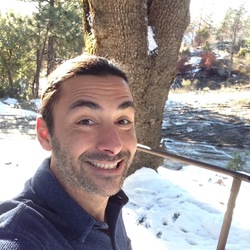

Château Talbot
Saint-Julien Cabernet Sauvignon Blend 1986
1986 vintage. 5 bottles tasted for a 1986 vintage BDX dinner @ Mister A's-San Diego. This was up against other 1986's Pichon-Lalande, Beychevelle, Gruaud-Larose, Montrose and Cos. Double decanted and tasted over 5 hours. Respectable sed. Effin pop and pour now. Right right now. The clear winner. So good with balance and enough fruit without having to reach or rationalize. If you're not able to access for 7-10 years, you should be okay. Delicious. 3.14.24. — 6 months ago
Le Haut Medoc de Branaire-Ducru
Haut-Médoc Red Bordeaux Blend 2010
Once part of the Beychevelle estate, this is the 2nd wine of Chateau Branaire Ducru. The grape varieties are typical Bordeaux, with Cabernet Franc, Cabernet Sauvignon, Merlot and Petit Verdot. A medium bodied wine, with plum, blackberry and cassis. The fruit is very present, with soft tannines. After 10 years in the bottle still young, but soft, and years ahead of it still. Surprisingly good quality for about 17-18 Eur. Formidable! — 4 years ago
Château Beychevelle
Barton & Guestier Red Bordeaux Blend 2000
Wonderful meal with sibling and dear friend! Delicious wine and memorable night. — 6 years ago
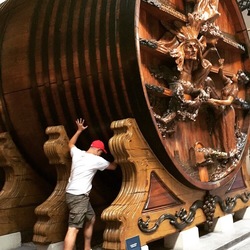

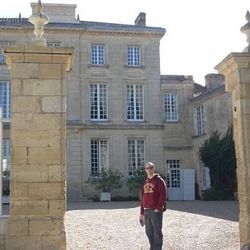
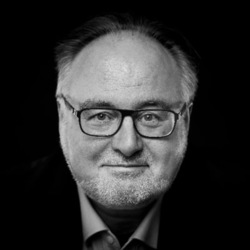
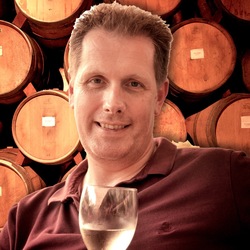



Randy Fillingim
38 years young. Still bringing it after all these years. near perfect harmony. A real treat from my friend Mark.  — 8 days ago